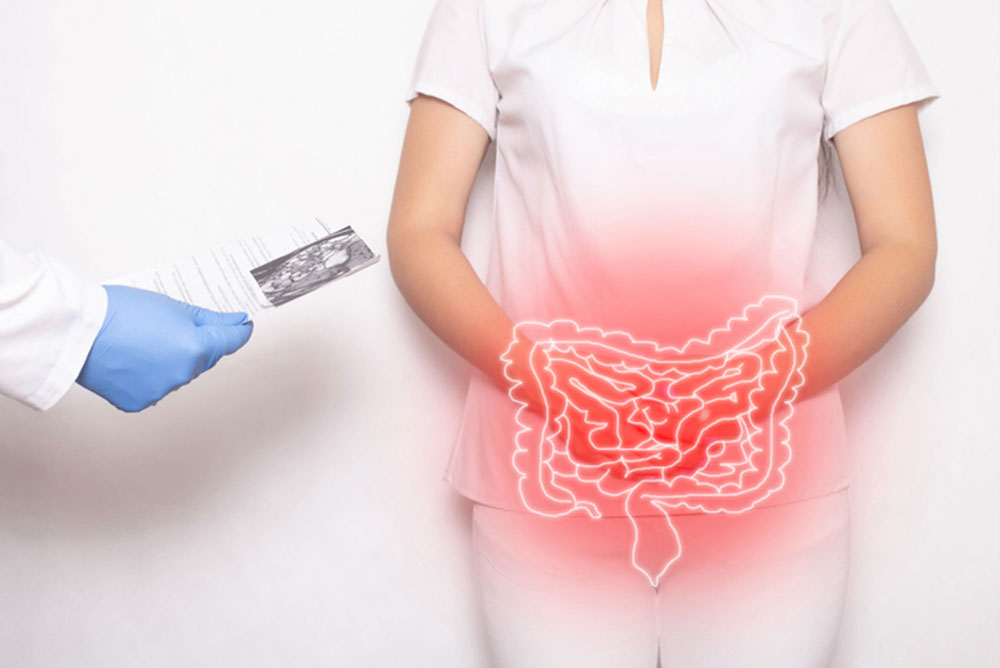
iStock
By Mary Carpenter
SYMPTOMS OF diverticulitis—inflammation in the colon — can spiral quickly from digestive discomfort blamed on recently consumed foods to life-threatening infection accompanied by debilitating pain and cramping, with bloating that makes the abdomen feel hard as stone.
When local DC-area fundraiser T.L. found herself lying on the couch with nausea and severe belly pain for the second straight day, she knew it was time to go to the ER —even though that meant leaving a vacation house to drive more than an hour back home. Admitted right away to the hospital, T.L. received antibiotics and nutrients through an IV tube for five days while her doctors evaluated the need for surgery.
Recent colon surgery on the Pope has cast new light on the progression of diverticulitis over time. Each episode of inflammation causes scarring and thickening of the colon wall, eventually shrinking the colon by as much as 90 percent, to “just one quarter of an inch—the diameter of a No. 2 pencil,” according to Apoorva Mandavilli in the New York Times.
Surgery becomes the only option in cases of severe infection, bleeding, intense pain, blockage or perforation—or when the patient has suffered many attacks of diverticulitis. “By the time it gets to the point where [the colon is] scarred down and too narrow, we don’t have a lot of medical options,” said University of Washington, Seattle, surgeon David R. Flum.
Surgery removes the affected sections of the colon and reconnects healthy tissue using stitches.
But when inflammation or infection are too widespread, surgeons will instead connect the bowel through an opening in the abdomen to a colostomy bag for evacuation—at least temporarily until the colon heals.
Diverticulosis, which is the precursor to diverticulitis, is a usually benign collection of pouches in the colon wall that can cause either no symptoms at all or some abdominal pain. Diverticulosis affects about two of every three people older than 60; some 10 to 15% of diverticulosis cases progress to diverticulitis, when the pouches become blocked, inflamed and infected.
(Belly pain can also occur with inflammatory bowel disease (IBD), autoimmune disease, including Crohn’s disease and ulcerative colitis; and irritable bowel syndrome (IBS), with no inflammation but physical issues like trapped gas and intestinal spasms causing pain.
Constipation, a common cause of diverticulosis, can result from a diet too low in fiber compounded by not drinking enough water, which leads to straining and pressure in the colon that in turn causes the colon lining to pouch out. Food particles that become wedged in the pouches and can lead to infection include, notably, seeds from fruits and vegetables, including cucumbers, tomatoes and strawberries.
As the colon becomes narrower, trapped gas can contribute to bloating. Gas-producing foods include those that are fried or spicy or have high fiber or fat content; also carbonated beverages and artificial ingredients in low-carbohydrate and sugar-free products, such as sorbitol.
Known for producing gas, the category of food called FODMAPS are short-chain carbohydrates like legumes that escape digestion. When fermented by gut bacteria, these produce methane and hydrogen—which is expelled as flatus (gas). Other factors exacerbating gas issues are overeating, eating too fast and swallowing air while eating.
Strategies for reducing gas include sitting down during meals and post-prandial exercise, such as walking. Certain yoga poses have reputations for helping to release air. While not always condoned, allowing yourself to fart can be healthy.
The recommended diet following diagnosis with diverticular disease involves keeping fluid intake up around nine cups per day; lowering fat to decrease pressure in the colon; and increasing fiber to above 25 grams/day—but gradually over time to minimize GI discomfort.
Conversely, during periods of inflammation, the best diet is high in protein to inhibit contractions in the colon, and “low-residue”—soft foods like puddings—to minimize undigested and unabsorbed food that remains in the large intestine following digestion and decreases fecal volume. All diets related to diverticular issues restrict nuts, seeds and hulls.
After five days in the hospital, T.L.’s abdomen began to feel softer and the pain subsided. She left the hospital with strict dietary instructions and three antibiotic prescriptions for the next month. What lasted were fatigue and nausea, especially with any exertion like working in the garden, probably due to a combination of weakness—from weight loss and stress on her body during the acute illness—and general stress and worry about having such serious symptoms, along with the heavy load of antibiotics.
—Mary Carpenter regularly reports on topical issues in health and medicine.
